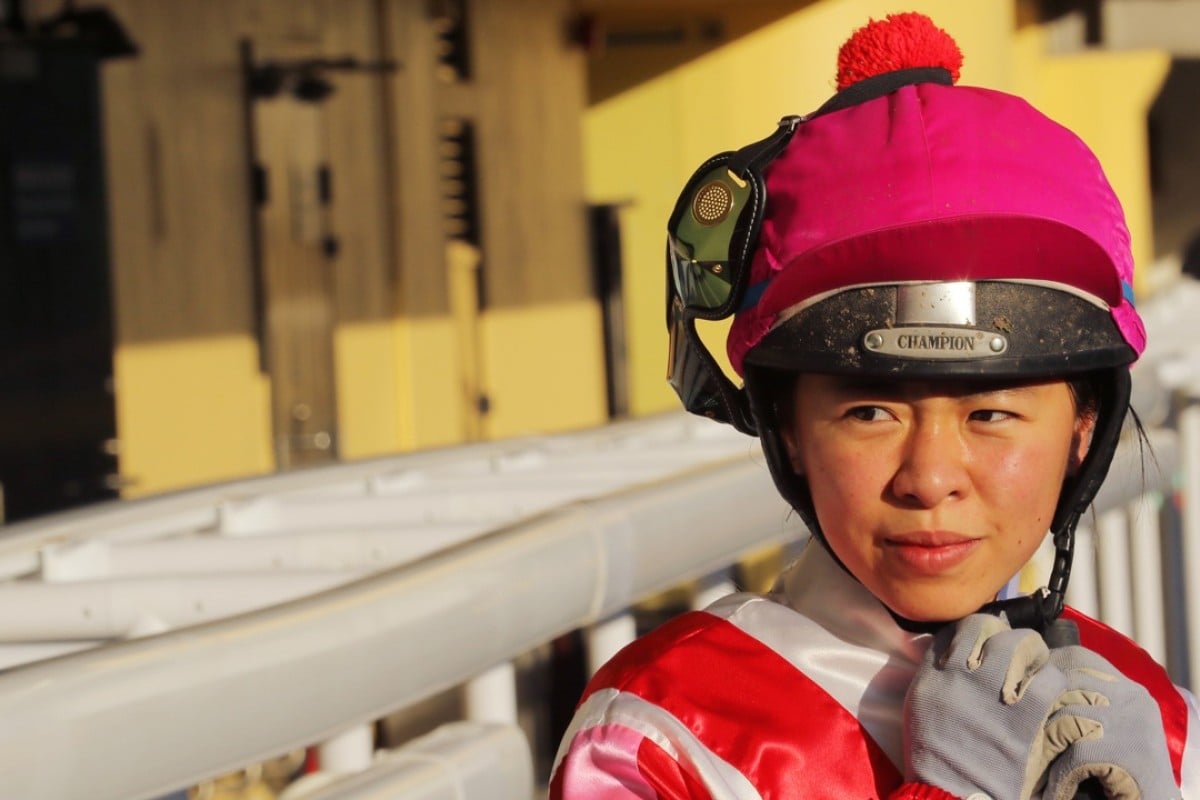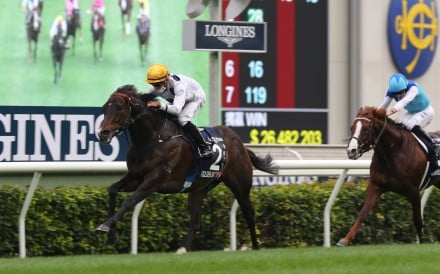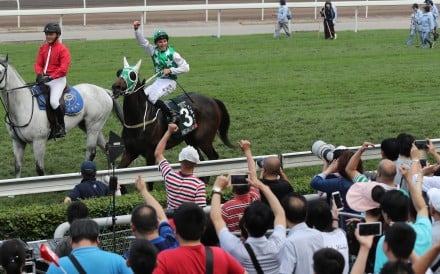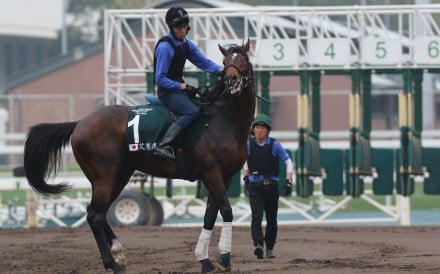It’s fair to say that in Asian racing women are underrepresented, especially in the riding ranks, but two of the region's leading lights lit up the track last weekend with International Women's Day fast approaching.
On a big weekend for female riders, Hong Kong’s Kei Chiong Ka-kei let her results do the talking with an impressive win at Sha Tin, while in Japan racing’s fanboys and press were going gaga over 18-year-old Nanako Fujita, the centre of attention at Nakayama as she made her debut.
in Japan racing’s fanboys and press were going gaga over 18-year-old Nanako Fujita, the centre of attention at Nakayama as she made her debut.
Even though she hasn’t won a race yet, she did finish second at her first ride and has attracted huge interest from mainstream media outlets.
Eventually the “wow, it’s a girl jockey” focus will probably fade and with it Nanako-fever will subside – as the press coverage has with Chiong to a degree – and racing’s harsh, universal currency of results will be the way in which their progress is judged.
So it should. There’s no reason to assess a woman's ability any differently to that of a male counterpart.
In fact, making a clear, balanced and above all unbiased decision about a rider’s competence can be a matter of life and death – there’s no room for tokenism out on the turf, as there might be in other sports.
WATCH: Dreams come true for Hong Kong's first female jockey for 15 years
That’s not to downplay the obstacles Chiong and Fujita have overcome to even reach this level of competition in a sport famously described as “chauvinist” by Melbourne Cup-winning jockey Michelle Payne during, we add, perhaps the greatest post-race or post-match interview in the history of sport.
While the amount of female riders in other parts of the world has continued to grow – particularly in Australia and New Zealand, where more than half of new apprentices in some areas are female – in Asia, women have seemingly found it harder to get a start.
Perhaps there are broader societal issues at play, but recent history shows that, for a female jockey, even riding in a race in Hong Kong or Japan these days is a great achievement.
Chiong, now 23, is the first local female jockey licensed to ride in Hong Kong since Carol Yu Wing-sze in May 2000, while Nanako is just the seventh female rider in JRA history and will be aiming to become the first to win a race since Yukiko Makihara (now Masuzawa) in June 2004.
Singapore doesn’t have a local female rider at the moment, although emerging jurisdiction South Korea does have better representation, with seven licensed in Seoul and three riding regularly – the best being Kim Hae-sun, the first female Korean jockey to ride 100 winners.
藤田菜七子騎手とホシノブーケ - Nanako Fujita and Hoshino Bouquet pic.twitter.com/tBQAdeMjHZ
— Horse Memorys (@horse_memorys) March 6, 2016
Any new apprentice is under the microscope the second they come out of the stalls here in Hong Kong, and there’s no doubt that women riders get an extra level of scrutiny from owners, trainers and industry professionals – that’s not to say that it is fair, just an observation.
At the same time, Chiong gets more attention than fellow apprentice Jack Wong Ho-nam ever did when he first started riding.
Fair enough if it’s for her history-making endeavours, but sometimes it seems to be under the guise of, “Aww, how cute, a girl jockey”. It’s the same with Fujita.
The very fact a woman riding in races is such a startling visual image for an Asian audience underlines just how far the region is behind the rest of the world in producing female riders.
For Chiong, the chance to break free of the novelty factor faces a new challenge on Wednesday when she competes at the incredibly tricky Happy Valley course for the first time, but at least she heads there with some momentum and much-needed confidence.
 Her big day at Sha Tin, which included a win on Lucky Ever and a surprising second on Go Go Win, was significant in a number of ways and the most important result might not have been the victory.
Her big day at Sha Tin, which included a win on Lucky Ever and a surprising second on Go Go Win, was significant in a number of ways and the most important result might not have been the victory.
That would be the front-running display on Amber Sky, a Group One winner whose best is behind him but was seemingly sparked to life by Chiong’s 10-pound claim.
With all eyes on the leader and whether Chiong’s presence would help the six-year-old, Amber Sky finished a close third behind Not Listenin’tome and Super Jockey, and Chiong will surely attract more bookings on front runners and older horses stuck on a mark.
Even though Chiong has had just four winners from 88 rides in her first season, her place strike rate suggested she was riding well – perhaps it is misleading, but she has a higher proportion of top three finishes than two of the top five jockeys.
When Chiong reaches 20 wins and the 10-pound weight advantage disappears, the rubber will really hit the road – just ask fellow apprentice Wong.

Wong started the season on fire with the 10-pound allowance, but since losing his full claim with a win on Call Me Achiever on December 19, he had ridden just one win from 84 starts with a seven-pound claim leading into Sunday’s Class Five breakthrough on Mister Marc.
It’s not so much the three pounds making the difference, it is that many of Wong’s opportunities are now going to Chiong and it is up to her to make the most of them.
Soon enough, Chiong will face the same reality.
Despite the extra media attention on racedays, there is an advantage being the only apprentice with 10 pounds, but history shows it can’t be easy being the only girl.





















